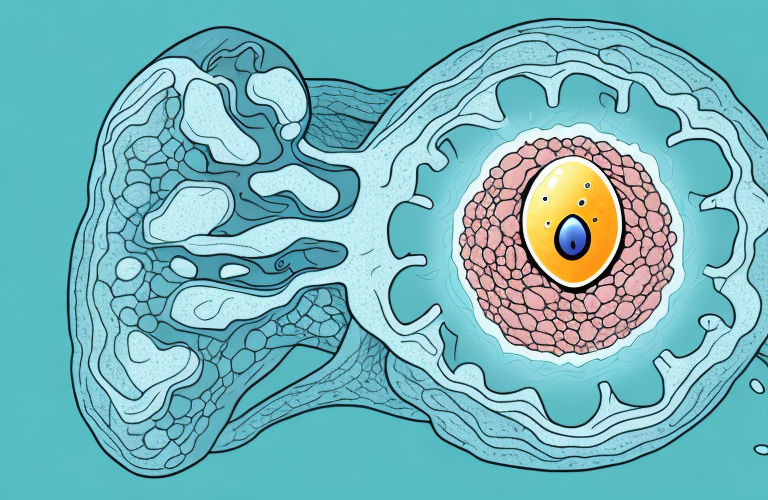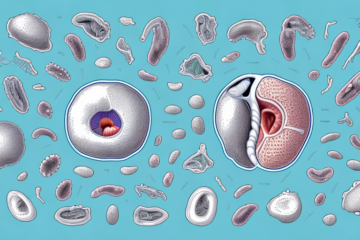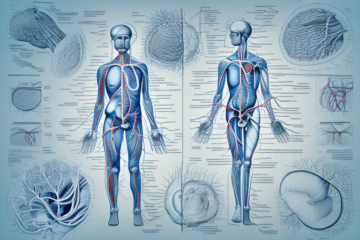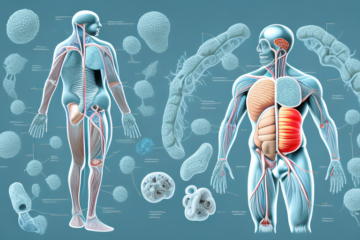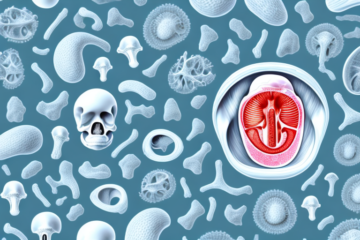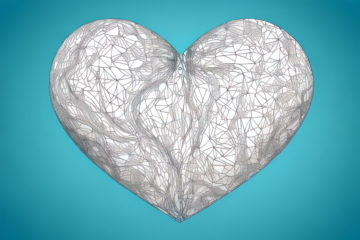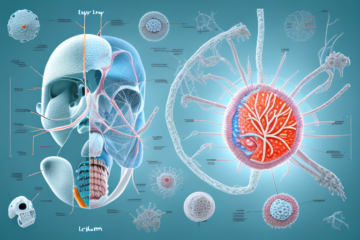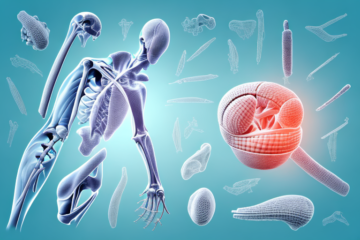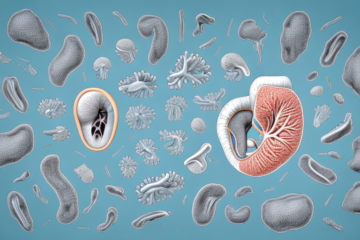The gallbladder is a small, pear-shaped organ located in the upper right quadrant of the abdomen, just below the liver. Despite its small size, the gallbladder plays a critical role in digestion by storing and releasing bile – a greenish-yellow fluid produced by the liver that helps break down fats in the small intestine.
What is the Gallbladder and Where is it Located?
The gallbladder is part of the biliary system, which includes the liver, gallbladder, and bile ducts. It measures about 3-4 inches long and can hold around 50 milliliters of bile when full. The organ is positioned behind the liver and in front of the intestines, and is connected to the liver and small intestine via a network of ducts.
The gallbladder plays an important role in the digestive process by storing and releasing bile, a fluid produced by the liver that helps break down fats in the small intestine. When food containing fat enters the small intestine, a hormone called cholecystokinin is released, which signals the gallbladder to contract and release bile into the small intestine. Without a gallbladder, bile would continuously drip into the small intestine, which can cause digestive problems.
Understanding the Role of the Gallbladder in Digestion
When you eat a meal that contains fat, your gallbladder contracts and releases bile into the small intestine to emulsify the fat and make it easier for the enzymes to break it down. The gallbladder also helps to regulate the concentration and flow of bile into the small intestine, ensuring that the right amount is released at the right time to optimize digestion.
In addition to its role in digestion, the gallbladder can also be the source of health problems. Gallstones, which are hardened deposits of bile, can form in the gallbladder and cause pain and discomfort. In some cases, the gallbladder may need to be removed to alleviate symptoms and prevent further complications.
It is important to maintain a healthy diet and lifestyle to support the proper functioning of the gallbladder. Eating a diet low in saturated and trans fats, and high in fiber, can help prevent the formation of gallstones. Regular exercise and maintaining a healthy weight can also reduce the risk of gallbladder problems.
What Happens When Your Gallbladder Malfunctions?
When the gallbladder is healthy and functioning properly, it can go unnoticed. However, if the gallbladder becomes inflamed or obstructed by gallstones – solid deposits that form in the gallbladder – it can cause a range of uncomfortable symptoms, including:
- Sharp pain in the upper right abdomen
- Back pain between the shoulder blades
- Nausea and vomiting
- Bloating and gas
- Indigestion and heartburn
There are several factors that can increase your risk of developing gallstones, including obesity, a high-fat diet, and a family history of gallbladder disease. Women are also more likely to develop gallstones than men, especially during pregnancy or while taking birth control pills.
If left untreated, a malfunctioning gallbladder can lead to serious complications, such as inflammation of the pancreas or infection of the gallbladder. In severe cases, surgery may be necessary to remove the gallbladder.
Common Signs and Symptoms of Gallbladder Disease
Gallbladder disease can take several different forms, including:
- Gallstones
- Cholecystitis (inflammation of the gallbladder)
- Choledocholithiasis (gallstones in the bile ducts)
- Gallbladder cancer (rare but serious)
The symptoms of these conditions can overlap, but some of the most common signs of gallbladder disease include:
- Abdominal pain that comes and goes
- Pain that worsens after eating or upon waking up in the middle of the night
- Pain that radiates to the back or shoulder blades
- Nausea and vomiting
- Fever and chills (with acute cholecystitis)
- Irritation and inflammation of the skin (with gallbladder cancer)
It is important to note that some people with gallbladder disease may not experience any symptoms at all. This is known as “silent gallstones” and is often discovered incidentally during medical imaging for other conditions. However, if symptoms do occur, it is important to seek medical attention promptly to prevent complications and ensure proper treatment.
Diagnosing Gallbladder Problems: Tests and Procedures
If you are experiencing symptoms of gallbladder disease, your doctor may order one or more of the following tests and procedures to confirm a diagnosis:
- Ultrasound
- Blood tests
- HIDA scan
- Endoscopic retrograde cholangiopancreatography (ERCP)
- Magnetic resonance cholangiopancreatography (MRCP)
- Cholecystectomy (surgical removal of the gallbladder)
It is important to note that not all cases of gallbladder disease require surgery. In some cases, lifestyle changes such as a low-fat diet and regular exercise can help manage symptoms. Additionally, medication may be prescribed to dissolve gallstones or to help the gallbladder contract and empty more effectively. Your doctor will work with you to determine the best course of treatment based on your individual needs and medical history.
Treatment Options for Gallbladder Diseases: Medications, Surgery and Lifestyle Changes
The treatment of gallbladder disease depends on the underlying cause and severity of your symptoms. In some cases, lifestyle changes such as eating a low-fat diet or losing weight may be enough to alleviate symptoms. However, if you have gallstones or other complications, you may need medication or surgery to manage your condition.
Some of the most common treatments for gallbladder disease include:
- Pain management with medication
- Bile salt tablets to dissolve gallstones
- Surgical removal of the gallbladder (cholecystectomy)
- Endoscopic retrograde cholangiopancreatography (ERCP)
It is important to note that while surgery is often the most effective treatment for gallbladder disease, it is not always necessary. In some cases, medication or lifestyle changes may be enough to manage symptoms and prevent complications. Your doctor will work with you to determine the best course of treatment based on your individual needs and medical history.
In addition to medical treatment, there are also natural remedies that may help alleviate symptoms of gallbladder disease. These include herbal supplements, such as milk thistle and dandelion root, which are believed to support liver and gallbladder function. However, it is important to talk to your doctor before trying any natural remedies, as they may interact with other medications or have side effects.
Preparing for Surgery: What to Expect Before, During and After a Cholecystectomy
If your doctor recommends cholecystectomy, a surgical removal of the gallbladder, you will need to prepare both physically and emotionally for the procedure. Before the surgery, your doctor will give you detailed instructions on what to eat, drink, and how to prepare your body for the surgery. During the surgery, you will be given anesthesia to ensure that you don’t feel any pain or discomfort. After the surgery, you will need to stay in the hospital for a short time to recover and monitor any complications that may arise.
It is important to note that cholecystectomy is a common and safe procedure, but like any surgery, it does come with some risks. Some potential complications include bleeding, infection, and injury to nearby organs. Your doctor will discuss these risks with you before the surgery and take steps to minimize them.
After the surgery, you will need to follow a specific diet to help your body adjust to the absence of the gallbladder. Your doctor will provide you with detailed instructions on what to eat and what to avoid. It is important to follow these instructions closely to prevent any digestive issues or complications.
Managing Post-Surgery Pain and Recovery: Tips and Strategies
After a cholecystectomy, you will experience some degree of pain and discomfort as your body adjusts to life without a gallbladder. However, there are several things you can do to manage your pain and speed up your recovery time:
- Take pain medication as prescribed by your doctor
- Avoid heavy lifting or strenuous activity for several weeks after surgery
- Get plenty of rest and allow your body time to heal
- Eat a low-fat, high-fiber diet to promote healthy digestion
In addition to these tips, it is important to stay hydrated after surgery. Drinking plenty of water and other fluids can help flush out any remaining anesthesia or medications from your system, and can also help prevent constipation, which is a common side effect of pain medication.
Another helpful strategy for managing post-surgery pain is to use heat therapy. Applying a warm compress or taking a warm bath can help soothe sore muscles and reduce inflammation, which can help alleviate pain and promote healing.
Dietary Changes After Cholecystectomy: Foods to Avoid and Foods to Eat More Of
After undergoing cholecystectomy, your body may have trouble digesting fat-rich foods, leading to diarrhea, bloating, and indigestion. To prevent these symptoms, it’s important to make gradual changes to your diet and avoid foods that can trigger discomfort. Some foods to avoid after cholecystectomy include:
- Fried foods
- High-fat dairy products
- Oily or greasy foods
- Spicy or acidic foods
- Caffeinated beverages
Instead, focus on eating a diet that is high in fiber and low in fat, including plenty of fruits, vegetables, whole grains, and lean protein sources like chicken, fish, and tofu.
It’s also important to note that some people may experience difficulty digesting certain types of fiber after cholecystectomy. Soluble fiber, found in foods like oats, beans, and fruits, can be easier to digest than insoluble fiber, found in foods like whole grains and vegetables. Experimenting with different types of fiber and keeping a food diary can help you identify which foods work best for your body.
Living Without a Gallbladder: Long-Term Effects on Digestion and Overall Health
While living without a gallbladder may require some dietary changes and adjustments, most people are able to lead a healthy, normal life after the procedure. However, if you experience persistent digestive symptoms or other health issues after cholecystectomy, it’s important to talk to your doctor about possible underlying causes and treatment options.
In conclusion, the gallbladder may be a small organ, but its role in digestion is crucial. Understanding the functions, common diseases, and treatments for the gallbladder can help you manage your health and live a comfortable, fulfilling life.
It’s important to note that while the gallbladder is not essential for survival, it does play a significant role in the digestion of fats. Without a gallbladder, the liver continuously produces bile, which is released into the small intestine. This can lead to a higher risk of developing diarrhea, bloating, and other digestive issues, especially after consuming fatty foods. However, making dietary adjustments such as reducing fat intake and eating smaller, more frequent meals can help alleviate these symptoms.

